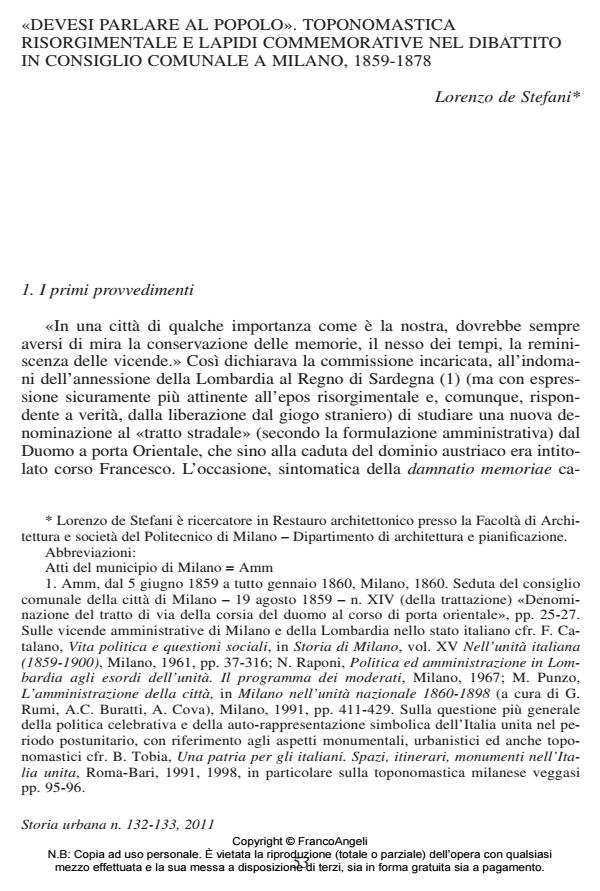"Devesi parlare al popolo" ("we need to speak to the people", Toponyomy of the Risorgimento and commemorative headstones in Milan city-council debate,1859-1878
Journal title STORIA URBANA
Author/s Lorenzo de Stefani
Publishing Year 2012 Issue 2011/132
Language Italian Pages 29 P. 53-81 File size 3193 KB
DOI 10.3280/SU2011-132003
DOI is like a bar code for intellectual property: to have more infomation
click here
Below, you can see the article first page
If you want to buy this article in PDF format, you can do it, following the instructions to buy download credits

FrancoAngeli is member of Publishers International Linking Association, Inc (PILA), a not-for-profit association which run the CrossRef service enabling links to and from online scholarly content.
This essay deals with toponyomy as an instrument of national feeling consolidation after the annexation of Milan to the Kingdom of Sardinia, and later to the Italian State. We have considered the city-council debates on the evocative value of the roads dedicated to the principal figures of the Risorgimento and to outstanding men in the field of letters, arts and sciences, in particular referring to those born in Milan or residing there for some time, who had influenced its civil, artistic and literary life. This action of "memory building" links up with the necessity of rationalizing and modernizing the city that was to become the unified State "moral capital" (ratified by city and district legislation in 1865). This had to take place together with the concern to keep local memories alive, always however, in harmony with the action of nation building from the point of view of language and common memories. This ties in with the will to celebrate principal historic civic events by affixing plaques as a synthesis of a "native history compendium" to be offered for the edification of the people.
Keywords: Milan - Toponyomy - National feeling - Common memories
Lorenzo de Stefani, "Devesi parlare al popolo". Toponomastica risorgimentale e lapidi commemorative nel dibattito in consiglio comunale a Milano, 1859-1878 in "STORIA URBANA " 132/2011, pp 53-81, DOI: 10.3280/SU2011-132003